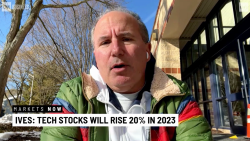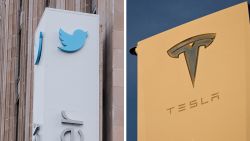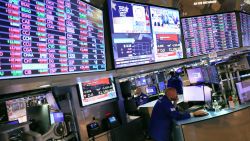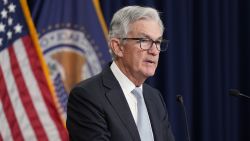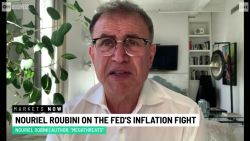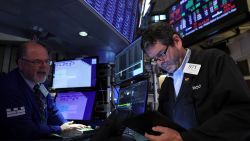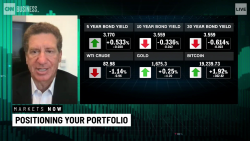Last summer, a large hedge fund had a hunch: Lumber prices were about to crash because of excess inventories caused by a railway strike.
Before placing a massive short bet that lumber company share prices would fall, executives at the hedge fund confirmed the theory by hiring a drone to fly over lumberyards, people familiar with the matter told CNN Business.
“You could literally see lumber piling up everywhere,” one of the people said.
The bet paid off handsomely when lumber flooded the market, crashing the price of the commodity and lumber companies.
The episode is just one example of how hedge funds are trying to break through in an increasingly crowded industry by turning to alternative data.
The old standbys of public economic metrics, earnings reports and Securities and Exchange Commission filings are being amplified by everything from drone and satellite imagery to scraping the web for real-time car or burrito prices.
“There’s this never-ending hunt for new and better data sources,” said Max Wolff, a former hedge fund executive who is now a managing director at Multivariate, a data-driven consulting firm.
Some hedge funds spend top dollar on alternative data
The goal is to increase the accuracy of bets, and, equally importantly, to make those bets more unique than the ones being made by the hedge fund next door.
Just like restaurants, hedge funds are under pressure to find ingredients and dishes that set them apart.
“Think of alternative data as the farmer’s market of investing. It’s a way to get an edge,” said Wolff, who consults for hedge funds and other investment firms.
That edge can be pricey. The hedge fund that used the drone spends tens of millions of dollars on alternative data each year, the people familiar with the matter said.
“They’re looking for a way to cultivate an investment thesis that’s not widely appreciated by every trader or other firm,” said Ken Heinz, president of Hedge Fund Research, an industry research group.
While using alternative data can give hedge funds an advantage, the strategy as it’s intended does not involve using confidential information. Instead, the strategy is based on gathering publicly available information and using it in a creative way.
Using satellites to gauge retail traffic
Drones and satellites can be used by investors to scope out potential bets. For example, energy companies are often tight-lipped about such things as the extent of damage caused to refineries by hurricanes and progress on building oil pipelines. But details on those developments can often be viewed from above — and then acted on in the marketplace.
Another favorite is using satellite imagery to gauge how busy parking lots are at major retailers. Consistently empty parking lots could signal poor store traffic, giving hedge funds a reason to short a retailer’s stock.
“It’s not magic. It’s just another input,” said Matthew Granade, chief market intelligence officer at Point72 Asset Management, the hedge fund run by billionaire investor Steve Cohen. Point72 is a hedge fund that grew out of Cohen’s SAC Capital, which pleaded guilty to insider trading charges in 2013 and converted into a family office. Point72 began taking outside money again last year.
“This stuff works best as one input into a much bigger process,” Granade said. “On the other hand, it’s getting harder and harder not to have these critical inputs.”
Spying on management
The biggest bucket of alternative data is scraping publicly available data from the web.
Thinknum is a web platform that allows hedge funds and other investors to comb through online data on hundreds of thousands of public and private companies around the world.
For example, Thinknum tracks vehicle inventory posted online by CarMax and Carvana. That data provides valuable insights into those companies’ upcoming earnings as well as demand for vehicles manufactured by major auto makers like Tesla and General Motors.
“You can wait until companies announce earnings and the whole world will know how companies did. Or, you can know two months in advance,” said Justin Zhen, co-founder of Thinknum. “The ability to know actionable information in real-time is obviously a huge edge in a very competitive market.”
Zhen, whose firm’s clients include more than 100 hedge funds as well as major investment banks, stressed that Thinknum only collects data that anyone can see from the public web. But it uses technology to decipher data faster than any human can.
One popular tool on Thinknum tracks online job listings and headcounts at major companies. That can provide clues into next steps that a company has not yet announced. For instance, a pharmaceutical company beefing up its sales staff could signal impending approval on a blockbuster drug by the Food and Drug Administration.
“It’s a way for investors to almost spy on management,” Zhen said.
Thinknum charges clients $9,600 per seat per year for access to its platform.
Some quantitative hedge funds, such as AQR Capital Management and Two Sigma, select securities based at least in part on models that use machine learning and artificial intelligence to decipher vast amounts of data.
‘Crapshoot’
But other hedge funds have avoided using alternative data altogether for various reasons, including the hefty cost and questions about the effectiveness of the strategy.
“I find the usefulness of datamining techniques to be a crapshoot,” said Dev Kantesaria, founder of Valley Forge Capital Management, a hedge fund based in Wayne, Pennsylvania with about $410 million in assets under management.
Even insightful data can at times be overshadowed by an external event that overshadows everything else.
“A lot of things can happen. A war could break out. Trade talks can fall apart,” said Kantesaria.
Raymond Nolte, a partner and co-chief investment officer of SkyBridge Capital, a network of hedge funds, said that alternative data can help validate ideas.
However, Nolte, whose firm is led by former Trump administration official Anthony Scaramucci, expressed concern about data-scrubbing models at hedge funds that automatically execute trades without human input.
“You don’t know if those models will go off the rails, until they go off the rails,” Nolte said.



